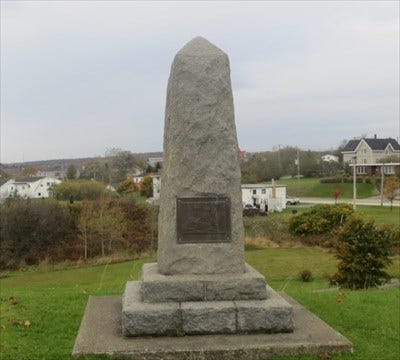Remembering the HMS Jervis Bay
84 years ago, an act of incredible courage and sacrifice saved many
The HMS Jervis Bay, Dakar 1940.
This is the HMS Jervis Bay, a British liner launched in 1922. She was requisitioned by the Royal Navy in August of 1939, and armed with seven 1898 BL 6 inch guns and two 1894 QF 3 inch guns. She was the sole escort1 for Convoy HX 84, a merged 37 ship convoy from Bermuda and Halifax to Britain. A single unarmoured liner with 19th century guns to protect 37 ships? Such was the state of the Allied war preparedness in 1940.
On November 5, 1940 in the mid-Atlantic the convoy was spotted by the German warship Admiral Scheer. Completed in 1934, the Scheer had six 11 inch guns, eight 6 inch guns, and 8 torpedo tubes.
Edward Fegen, captain of the Jervis Bay, ordered the convoy to scatter. His ship was hopelessly outranged and outgunned. Firing more to distract than in any hopes of doing real damage, the Jervis Bay adjusted course for the Scheer and engaged.
The German guns ravaged the Jervis Bay. Fegen was wounded and many of his crew were killed. They fought on until their ship was sunk. The “battle”, such as it was, lasted little more than 20 minutes. Only 65 of the Jervis Bay's 254 man crew survived. Fegen went down with his ship.
As a result of these actions, 32 merchant ships out of the 37 ship convoy escaped. Fegen was awarded the Victoria Cross posthumously. In the memoir he wrote after the war, Captain of Admiral Scheer Theodor Krancke paid tribute to the courage of the Jervis Bay, and also of the freighter Kenbane Head, which continued to fire even as it sunk.
The Jervis Bay memorial in Saint John commemorates the heroism of its crew. The Jervis Bay had been refitted for war service at Saint John in the summer of 1940.
I tell this story because of the date and the local connection but also because I remain pierced by the courage of men who, knowing full well that they are doomed to fail, nonetheless find in themselves the means to act. It humbles me and reminds me how deep the price others paid for me to live a life of freedom.
Two Town-class destroyers, the HMCS Columbia and HMCS St. Francis, were with the convoy when it formed up on the 28th of October, but left the following day.






For several years while the Hon Gerald S Merrithew was Minister of Veterans Affairs I had the privilege of laying a wreath on Remembrance Day at Jervis Bay on his behalf. It was a very emotional.
Full steam ahead and damn the torpedoes.